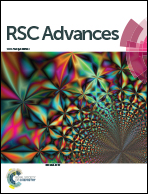Seed-mediated synthesis of shape-controlled CeO2 nanocrystals
Abstract
We report the effect of varying the starting materials and experimental conditions on the shape control of CeO2 nanocrystals using hydrothermal methods, including using different cerium precursors (Ce3+: Ce(NO3)3 and Ce4+: Ce(NH4)2(NO3)6), stirring treatment, and oxidation of cerium(III) hydroxide. It was demonstrated that the formation of Ce(OH)3 nuclei is a key step to growth of different morphological CeO2 nanocrystals.


 Please wait while we load your content...
Please wait while we load your content...